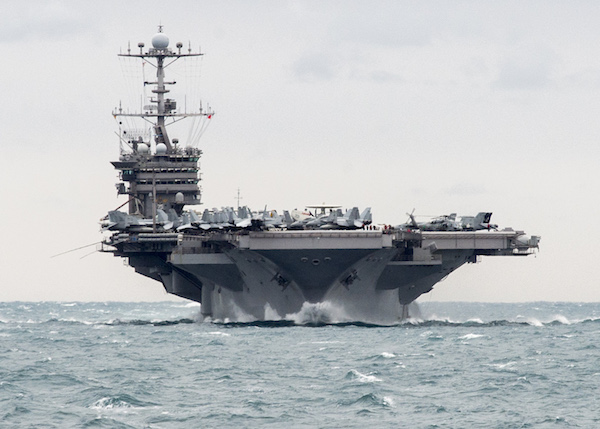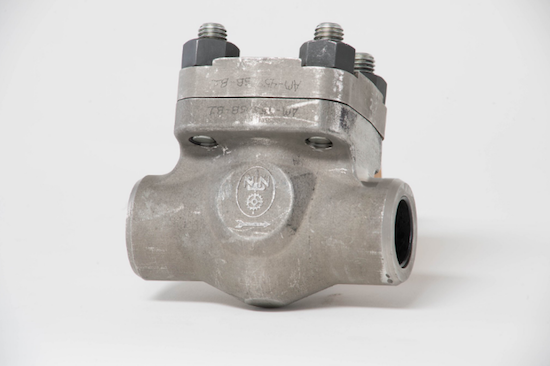Navy Dips its Toe into 3D Printing
The U.S. Navy hopes to reduce production lead times and part production costs using additive manufacturing.

Newport News Shipbuilding provided a printed drain strainer for the aircraft carrier Harry S. Truman. Image courtesy U.S. Navy.
Latest News
January 10, 2019
Metal 3D printing is expanding its reach by air, by land, and now by sea if the U.S. Navy sees positive results as it tests additive manufacturing for ship-building applications.
Back in October, Naval Sea Systems Command announced it had approved a 3D-printed metal drain strainer for use on the aircraft carrier the Harry S. Truman. The prototype part was installed in the carrier’s steam system as part of a one-year trial.
The strainer was originally a cast part that required a nine-month lead time to produce. The printed piece was created by Huntington Ingalls Industries and Newport News Shipbilding, which has been working on on its own maritime printing projects. The printed part took just three days to build.
The company is working with the Navy to establish specifications for 3D printed ship parts.

“We're still paving the road because the Navy, rightfully so, has to pay a lot of attention to the reliability of the parts, safety of their sailors and operability of their ships,” said Don Hamadyk, Newport News’ director of research and development, in an interview with the NavyTimes. “So, the technical work that we've done over the last, really, four years is all aligned toward making the Navy comfortable with the parts that are going on their ships.”
Newport News installed a 3D Systems ProX DMP 320 metal additive manufacturing system at its facility last year.
“We have delved into uncharted territory to create a positive disruption in our industry in much the same way the modern welding processes supplanted rivets, revolutionizing the way ships are built,” said Charles Southall, Newport News’ vice president of engineering and design. “We’re proud to be leading the way.”
The Navy hopes to cut lead times on important parts and find a way to produce spare parts at less cost.
Source: NavyTimes
Subscribe to our FREE magazine, FREE email newsletters or both!
Latest News
About the Author
Brian Albright is the editorial director of Digital Engineering. Contact him at [email protected].
Follow DE





